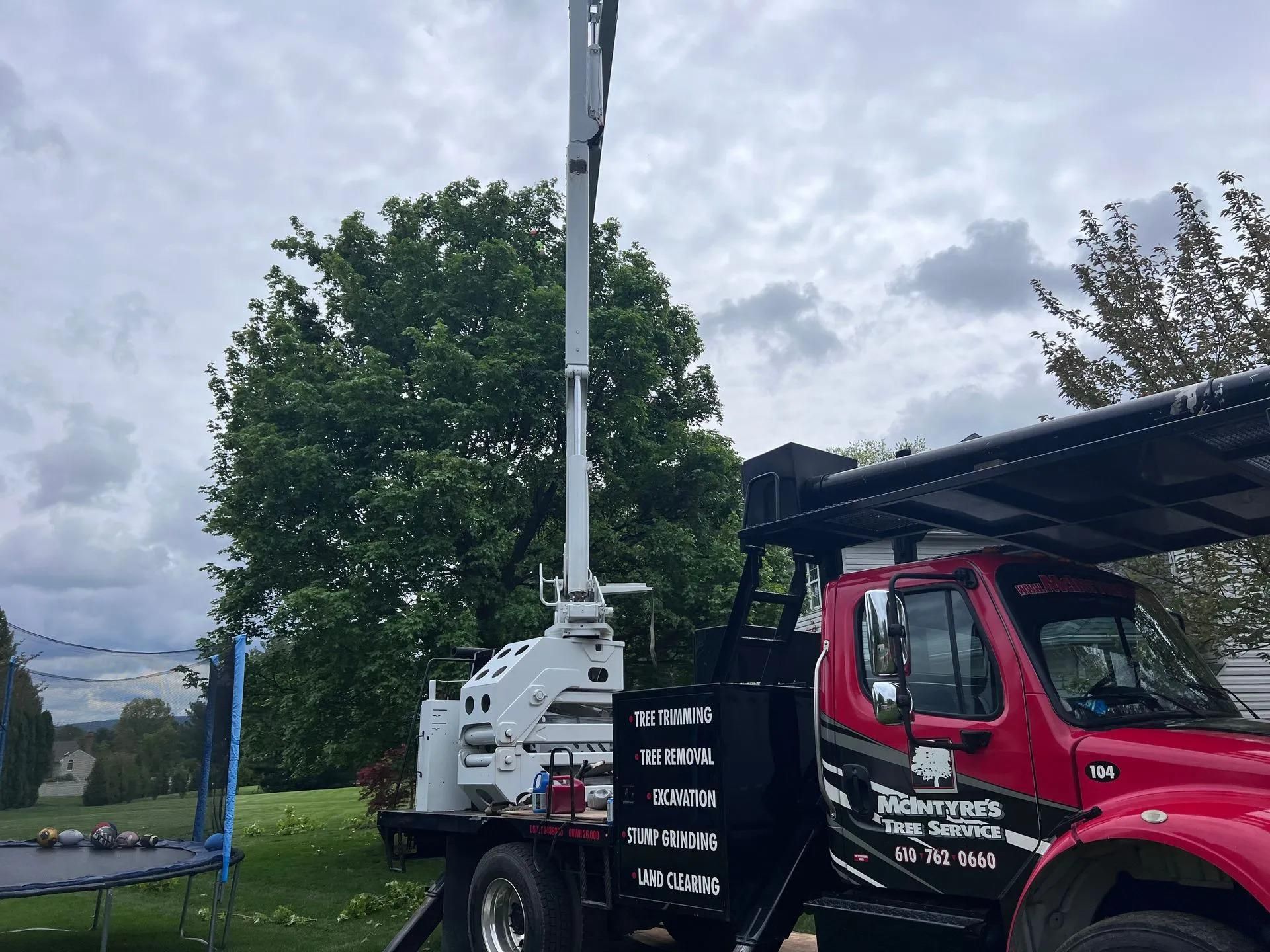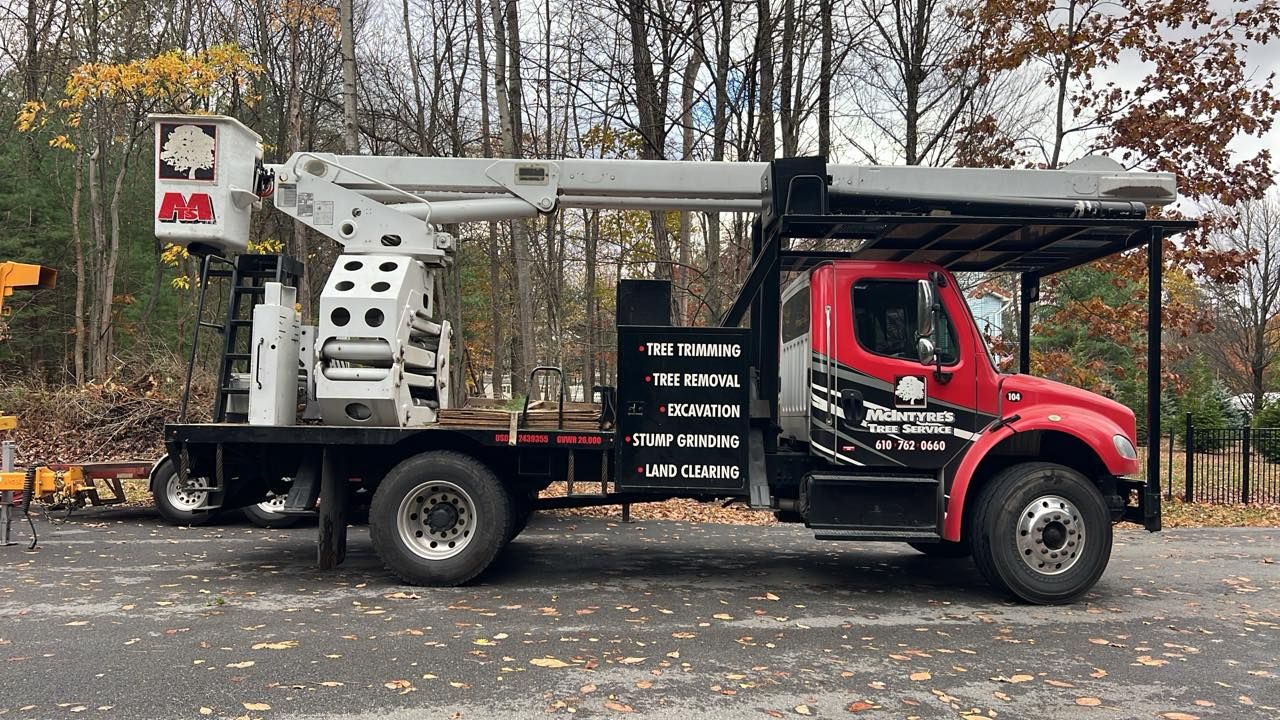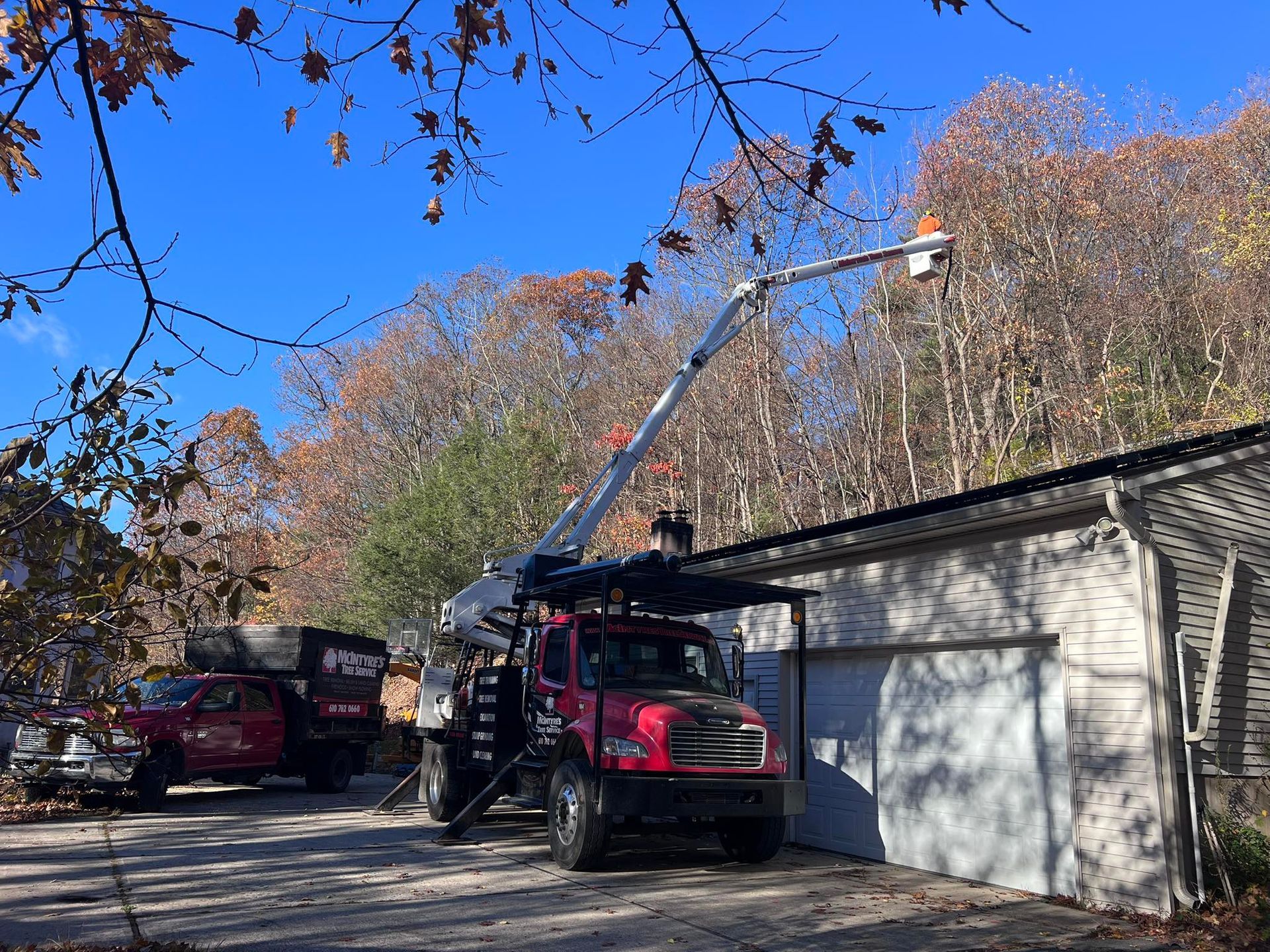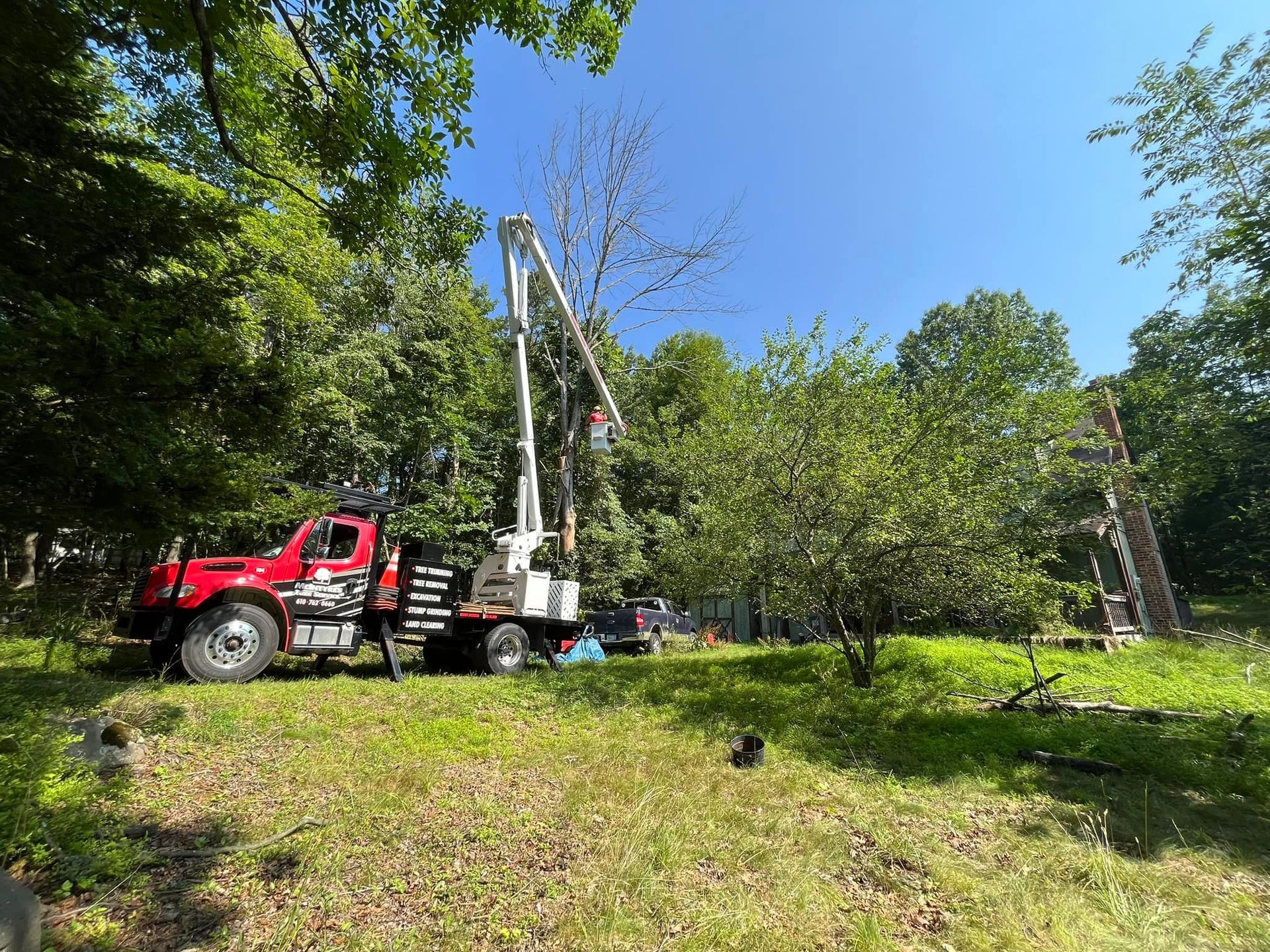How Land Clearing Can Improve Drainage and Prevent Flooding

Table of Contents
- Why Proper Land Clearing Matters for Drainage
- Common Signs of Poor Drainage on Your Property
- How Land Clearing Actually Improves Water Flow
- The Role of Property Preparation in Preventing Flooding
- What We’ve Seen: Real Issues Solved with Land Clearing
- Our Step-by-Step Approach to Effective Land Clearing
- Long-Term Benefits You’ll Notice After Clearing
- Final Thoughts and How to Get Started
Key Takeaways
- Smart land clearing keeps rainwater moving where it should—away from your home and foundation.
- Professional drainage improvement helps reduce erosion, pooling, and long-term property damage.
- Proper property preparation ensures you’re ready for any weather and future projects.
- Local experts like Mcintyre’s Tree Service can assess your land and make sure it’s built to last.
Why Proper Land Clearing Matters for Drainage
Around here in Pennsylvania, we get our fair share of heavy rain and melting snow. Over time, that water can wreak havoc on your property if it doesn’t have a clear path to go. Maybe you’ve noticed standing puddles after every storm, soggy spots that never dry out, or soil washing away near your driveway or foundation. Those are warning signs that your drainage isn’t doing its job.
That’s where land clearing comes in. It’s not just about removing trees or brush—it’s about shaping your property so water moves naturally and safely. When done right, it creates the foundation for long-term drainage improvement and prevents small issues from turning into major repair headaches.
We’ve seen this many times: a homeowner calls us after months of trying DIY fixes—digging trenches, adding gravel, redirecting gutters—but the problem keeps coming back. The truth is, no drainage system works properly if the land itself isn’t cleared and graded to support it.
Common Signs of Poor Drainage on Your Property
Every yard is different, but there are some telltale signs that your land might need professional clearing and drainage improvement:
- Water pooling near the base of your home or garage
- Soggy, uneven patches that stay wet days after rainfall
- Visible erosion or exposed roots
- Cracked foundations or shifting soil near structures
- Persistent mosquito or insect problems from standing water
We once helped a homeowner in Allentown who thought their backyard simply “held water” because of clay soil. After a full inspection, we discovered the real issue: dense underbrush and tree roots were blocking the natural runoff path. Once we cleared it, graded the surface, and installed proper drainage channels, the problem disappeared completely.
That’s the power of professional property preparation—it gives the water somewhere to go.
How Land Clearing Actually Improves Water Flow
It’s easy to think of land clearing as just removing unwanted trees or shrubs, but it’s much more strategic than that. When we handle a clearing job, our focus is always on how the terrain interacts with rainfall.
Here’s how it works:
- Removing obstacles –
Overgrown vegetation, stumps, and debris block the natural movement of water. Clearing them opens up the land and restores proper flow. - Regrading the land –
By adjusting the slope and contour, we make sure water drains away from buildings, driveways, and other key areas. - Preventing soil compaction –
Heavy debris can compact the soil, trapping water on the surface. Clearing the area allows the ground to absorb and drain moisture more efficiently. - Improving visibility and access –
Once cleared, you can easily identify and fix low spots, drainage ditches, or erosion-prone zones.
In short, land clearing lays the groundwork for effective drainage improvement. Without it, even the best-engineered systems can fail because water always takes the path of least resistance—and if that path is blocked, it’s coming right toward your home.
The Role of Property Preparation in Preventing Flooding
When you think about property preparation, it’s really about readiness. Before you can build, landscape, or install drainage systems, you need to ensure your land is stable and properly shaped.
Flood prevention starts long before the first storm hits. During property preparation, we look at the natural slope, soil type, and surrounding environment. A well-prepared property has a gentle grade that guides water away from the foundation, with open channels or swales that allow excess runoff to escape without pooling.
We often remind homeowners: if you skip proper land clearing and preparation, every improvement you make after—like paving, planting, or installing pipes—will be fighting against the land, not working with it.
By taking the time to clear and prep your property correctly, you’re protecting your investment and ensuring your landscape lasts for years.
What We’ve Seen: Real Issues Solved with Land Clearing
One of the things we love about our work is seeing the transformation that comes from proper land clearing.
A few months ago, we worked with a family near Bethlehem who had constant flooding in their backyard. Every time it rained, water pooled against their back porch, seeping into the basement. They’d already tried extending downspouts and digging small trenches, but nothing helped for long.
When we arrived, we immediately noticed thick brush and fallen branches blocking the natural runoff route. The soil around their yard was also sloping back toward the house—something that often happens over time as debris builds up.
We cleared the overgrowth, reshaped the terrain, and installed a small channel drain to direct runoff downhill. After the next storm, they called us just to say they couldn’t believe how dry the area stayed. That’s the kind of result that proves why land clearing is about more than aesthetics—it’s about function.
Our Step-by-Step Approach to Effective Land Clearing
When you hire us for a land clearing project, we follow a methodical process designed to balance efficiency and environmental care.
Assessment and Planning
Every property has its own drainage challenges. We start by walking the site, noting elevation changes, vegetation density, and existing water paths. This helps us determine where clearing will make the biggest impact.
Selective Clearing
We don’t just wipe out everything. We remove only what’s necessary—overgrowth, fallen trees, roots, and obstacles—while preserving healthy vegetation that supports the soil structure.
Grading and Shaping
Once the land is open, we regrade areas that collect water, ensuring slopes guide runoff away from key structures. This is where real drainage improvement happens.
Erosion Control
After clearing, we apply techniques like seeding, mulching, or installing erosion mats to protect the soil and stabilize the terrain.
Site Preparation for Future Projects
If you plan to build, landscape, or expand, we make sure the cleared land is properly compacted and ready for whatever comes next.
This comprehensive process is what sets professional clearing apart from simple brush removal—it’s about long-term stability, not just quick cleanup.
Long-Term Benefits You’ll Notice After Clearing
After a thorough land clearing and property preparation, the difference is noticeable almost immediately. You’ll see faster drainage after rainfall, fewer muddy spots, and a landscape that looks more open and usable.
But beyond appearance, there are deeper benefits:
- Reduced flooding risk: With water flowing properly, you’re far less likely to see basement leaks or yard flooding.
- Improved soil health: Clearing compaction allows nutrients and air to reach deeper into the soil, improving vegetation.
- Higher property value: A well-maintained landscape with solid drainage appeals to buyers and reduces maintenance costs.
- Better environmental balance: Controlled clearing prevents erosion and helps protect nearby waterways from sediment buildup.
We’ve found that once homeowners experience these results firsthand, they often wish they’d done it sooner. It’s one of those projects that pays off every time it rains.
Final Thoughts and How to Get Started
Whether you’re dealing with chronic water issues or planning a new outdoor project, land clearing is one of the smartest investments you can make for your property. It’s the first and most important step in drainage improvement and long-term flood prevention.
At McIntyre’s Tree Service, we take pride in helping homeowners throughout Pennsylvania prepare their land the right way. We don’t just clear—we shape, grade, and prepare your property to handle whatever the weather brings.
If you’ve been battling standing water or want to make sure your yard is ready for future improvements, we’d be happy to take a look. Contact us today to schedule a professional assessment.
Let’s make your property safer, drier, and ready for whatever comes next—with McIntyre’s Tree Service by your side.
Frequently Asked Questions
What’s the purpose of land clearing on our property?
We clear land to create a safer, more functional space and improve how water flows. By removing trees, stumps, and brush, we help prevent flooding and erosion while preparing your property for future projects or landscaping.
How does land clearing help with drainage improvement?
When we clear and regrade your land, it allows water to move freely instead of pooling or soaking into unwanted areas. Proper land clearing sets the stage for effective drainage improvement that protects your home and yard from water damage.
What’s included in your property preparation service?
Our property preparation process includes clearing, grading, and stabilizing your land. We make sure the surface drains correctly, the soil stays healthy, and the area is ready for construction, landscaping, or any outdoor improvement plans.
How do we know if our property needs drainage improvement?
If you notice standing water, soggy soil, or erosion after rain, it’s a sign your drainage system isn’t working. We assess the slope and condition of your land to see if clearing or regrading is needed for proper drainage improvement.
Why should we hire professionals for land clearing and property preparation?
We have the right equipment and expertise to clear land safely and efficiently. Professional land clearing ensures your property preparation supports healthy drainage, prevents flooding, and avoids costly structural or landscaping issues.



